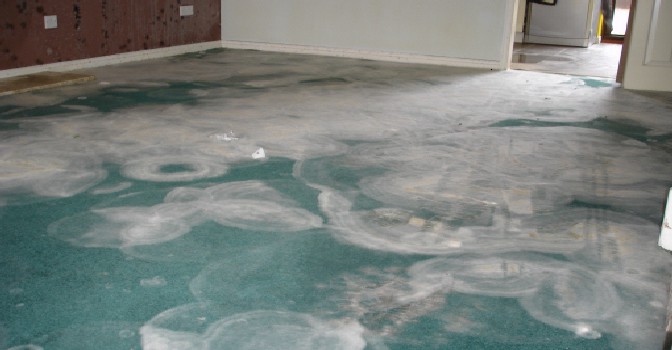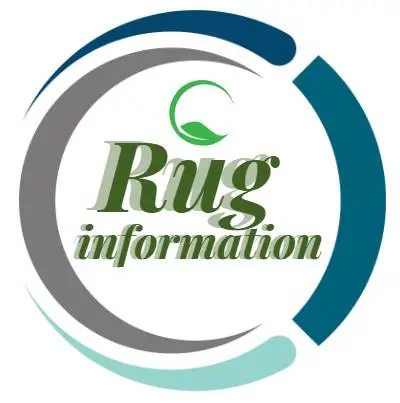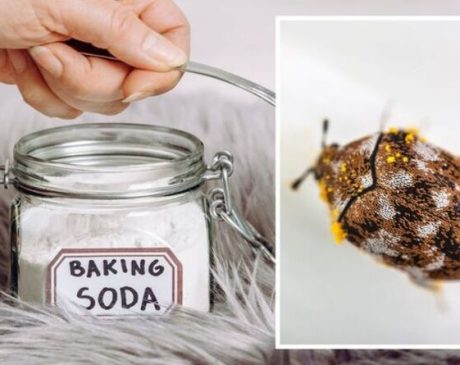Why Is My Floor Wet Under My Carpet

When you discover that your floor is wet under your carpet, it can be a cause for concern. This problem can be caused by a variety of issues, including water damage from a leaky pipe, roof or windows, water seepage from an appliance, or even a plumbing issue. In any case, it is important to identify the source of the moisture and address the underlying problem to prevent further damage. If the area remains wet, it can lead to mold growth, structural damage, and even health risks. It is important to take action as soon as possible to protect your home.
What Causes Wet Floors Under Carpet?
When it comes to wet floors under carpets, there are a variety of factors that could be causing the issue. One of the most common causes of wet carpets is water seeping through the subfloor, often due to a leak in the plumbing, a crack in the foundation, or a high water table. Moisture can also accumulate underneath carpets due to condensation, which is caused by a buildup of humidity in the home. Additionally, moisture may be caused by poor ventilation or the presence of mold.
In order to determine the cause of a wet floor under carpet, it is important to inspect the area carefully. Look for any signs of plumbing problems, foundation cracks, or mold. It is also important to check the humidity levels in the home, as well as the ventilation system. If the problem persists, a professional should be consulted in order to identify the source of the moisture and develop a plan for remediation.
Wet floors under carpets can be a nuisance, but with the right steps, the source of the problem can be identified and the area can be repaired. By understanding what is causing the wet floors and taking proactive steps, homeowners can protect their carpets and keep their floors dry.
Different Types of Moisture Sources
When it comes to wet floors beneath carpets, the cause is often moisture. But where does this moisture come from? Though it can vary from home to home, there are several common sources of moisture that can cause wetness under carpets.
One common source is condensation. This often occurs in humid climates or when there is an inadequate ventilation system in place. The moist air can condense on cool surfaces, such as the floor beneath the carpet, and lead to dampness.
Another source of wetness is a leaking pipe or appliance, such as a washing machine, water heater, or air conditioning unit. These appliances and fixtures are often located in basements or other areas close to the flooring, and any leaks can cause moisture to seep through and cause wetness under carpets.
It’s also possible that the wetness is coming from an outside source, such as a nearby river or lake, or even from groundwater. This is especially common in areas where the water table is high, or when there is a breach in the foundation or exterior walls of a home.
Finally, there can also be moisture coming from the carpet itself. This can happen due to a spill or accident, or if the carpet was not properly installed.
No matter what the source of moisture is, it is important to address the issue as soon as you can to prevent further damage. If you are unable to identify the source, you may need to contact a professional to inspect the area and help identify the cause of the wetness.
Dangers of Wet Floors and Carpet
Water logging in the floor under the carpet can lead to a host of problems both for the home and for the health of its inhabitants. Not only can it cause the carpets to become soggy, discolored, and musty, but it can also lead to the growth of mold and other organisms that thrive in moist environments. This can cause the air quality in the home to become hazardous, leading to respiratory issues, allergies, and other health complications. Furthermore, the water can cause the carpet padding to deteriorate, or even cause the floor beneath the carpet to rot and warp.
When it comes to preventing water from getting under the carpet, it is important to ensure that the floor has proper drainage and that the carpet is installed correctly. Regular inspection and maintenance of the carpet and flooring is essential, and if any signs of water damage are noticed, it is important to take prompt action to address the issue to prevent further damage. While waterproofing the floor may sound like an attractive option, it is important to note that this should be done only after a thorough inspection and repair of any existing water damage.

Credit: www.totalclean.co.uk
Signs of Water Damage Under Carpet
Carpeting provides a beautiful, durable, and comfortable flooring solution for any home. But, if it becomes wet, it can be a sign of a bigger issue. Water damage under your carpet can lead to mold growth, weakening of the base layers, and other costly repairs. Understanding the signs of water damage under your carpet can help identify potential issues before they become a major problem.
The most obvious sign of water damage under your carpet is a wet floor. If you notice any wet spots, you should investigate further to determine the source. Other signs to look out for are discoloration, a musty smell, or visible mold growth. If you notice any of these signs, it’s important to act quickly to prevent further damage.
If you suspect water damage under your carpet, contact a professional to inspect the area. They can identify the source of the water and determine the extent of the damage. Professional water damage restoration services can help dry and restore your carpet and underlying layers. This will help prevent costly repairs down the line.
By being aware of the signs of water damage under your carpet, you can quickly identify and address any issues. Taking preventative measures will help protect your home from further damage and costly repairs.
How to Diagnose and Fix the Problem
Carpeted floors are a popular choice for many homes, but if you have noticed that your carpets are wet, you may be wondering why. There are a few common culprits that could be causing your wet carpet. To diagnose the problem and find the best solution, it is important to understand the potential causes and the steps you can take to fix the issue.
Another potential cause of wet carpets is high humidity in the home. If the humidity levels are too high, it can cause condensation on the underside of the carpet that can lead to moisture buildup and wet carpets. To combat this, you should consider using a dehumidifier to reduce the humidity in the room. If the problem persists, you may need to install a vapor barrier beneath the carpet to prevent humidity from seeping up.
Finally, if your carpet is wet due to flooding or water damage, it is important to take immediate action to prevent further damage. You may need to contact a professional to repair or replace the affected area. You should also extract the standing water and use fans and dehumidifiers to dry the area completely.
Identifying the source of your wet carpets and finding the best solution can be a challenge, but understanding the potential causes and steps to take can help you identify and fix the problem. If you are still unsure, it is best to contact a professional to assess the situation and recommend the best course of action.
Preventative Measures to Avoid Wet Carpet
It’s a common problem: you go to move your couch and find your carpet is wet underneath. If this has happened to you, you’re probably wondering why your floor is wet under your carpet. There could be a variety of causes, but the most common culprit is water damage. Understanding the source of the problem and taking preventive measures can help ensure that your carpet stays dry.
The first thing to understand is that water damage can occur from either inside or outside your home. Leaky pipes, condensation, and flooding are examples of external sources of water damage. On the other hand, internal causes include excess humidity, poor ventilation, and spills. Identifying the source of the water damage can help to prevent it from happening again.
Once the source has been identified, it’s important to take preventive measures to ensure your carpet stays dry. This can include sealing any cracks or gaps around windows and doors, fixing any leaky pipes, and using a dehumidifier to reduce indoor humidity. Additionally, you can use a waterproof sealant on your carpet and use a vacuum with a HEPA filter to clean up any spills.
By taking the time to understand why your floor is wet under your carpet and taking preventive measures, you can help ensure your carpet stays dry. The earlier you identify and fix the source of the problem, the better your chances of avoiding further water damage.
How to Clean and Dry Wet Carpet
Carpets are a great way to add comfort and style to any room, but wet carpets can be a real nuisance. Whether you have a water leak or your pet had an accident, wet carpets can create an unpleasant odor and even encourage the growth of mold and mildew. Fortunately, there are steps you can take to clean and dry wet carpets properly.
The first step is to identify the source of the water and take steps to prevent it from happening again. If you have a water leak, it’s important to get it repaired as soon as possible. After the source of the water is taken care of, you can start to clean and dry the wet carpet.
The first step is to remove as much of the water as possible. This can be done with a wet-dry vacuum or by using towels to soak up the excess water. Once you’ve removed as much of the water as you can, you should dry the carpet as quickly as possible. You can speed up the drying process by using fans or dehumidifiers to help evaporate the water.
If you’re dealing with a wet carpet due to a pet accident, you’ll need to use a pet-safe cleaner to remove any stains or odors. You can use a carpet cleaner, but it’s important to choose one that is specifically designed for pet accidents. Once you’ve cleaned the area, you should allow it to dry completely before replacing the carpet.
Cleaning and drying wet carpets can be a tedious process, but it’s important to do it properly to prevent mold and mildew from growing. By following the steps outlined above, you can restore your carpets to their original beauty and prevent future water damage.
Expert Tips for Keeping Floors Dry Under Carpet
Carpets are a popular floor covering choice due to their comfort and warmth. But when carpet is installed over a wet floor, it can lead to mold, mildew, and other problems. To prevent this, it is important to keep the floors dry under your carpet. In this blog, we will discuss some expert tips for ensuring that your floors stay dry and safe beneath your carpets.
First, it’s important to assess the condition of your subflooring. Make sure to check for any existing moisture problems and address them before installing the carpet. If there is water or moisture present, it’s essential to remove it before laying the carpet. This can be done by using a dehumidifier to remove excess moisture and a fan to dry out the area.
Another important tip is to use high-quality carpet padding. Quality padding can help prevent moisture from seeping through the carpet and onto the floor. Additionally, make sure to use a waterproof adhesive when installing the carpet. This will help keep the carpet firmly in place and prevent any moisture from seeping through.
It’s also important to regularly check your floors for signs of moisture. If you notice any damp patches, address the issue immediately to prevent further damage. You can also use a moisture meter to measure the amount of moisture in the area and take steps to reduce it.
Finally, take some preventive measures to keep your floor dry. Make sure to use a waterproof sealant on the floor before installing the carpet and keep your carpets clean to prevent any buildup of moisture.
By following these tips, you can ensure that your floors stay dry underneath your carpets and avoid any moisture-related problems.
FAQs About the Why Is My Floor Wet Under My Carpet
1. What is causing my floor to be wet under my carpet?
The most likely cause of a wet floor under your carpet is a plumbing leak from a leaking pipe or appliance. It could also be from a sink or tub overflow, a cracked foundation, or a leak from the roof.
2. Should I be worried if my floor is wet under my carpet?
Yes, if you experience a wet floor under your carpet, it is important to have it inspected as soon as possible to identify and repair the source of the leak. If left unaddressed, the water can cause mold and mildew growth, rot, and structural damage.
3. What should I do if I find my floor is wet under my carpet?
If your floor is wet under your carpet, you should contact a professional plumber or a water damage restoration company to inspect the area and determine the source of the leak. The professional can then advise you on the best course of action to repair the leak and restore your floor.
Conclusion
There are a variety of reasons why your floor may be wet under your carpet, ranging from plumbing issues to water damage, and it is important to identify the source of the issue in order to determine the best course of action. In some cases, the wetness may be caused by a leak in a plumbing pipe, and it is important to fix the leak as soon as possible. In other cases, the wetness may be caused by flooding or other water-related problems, in which case it is important to address the underlying issue in order to prevent further damage to the flooring and carpet. It is also important to contact a professional to ensure the wetness is addressed correctly and safely.



